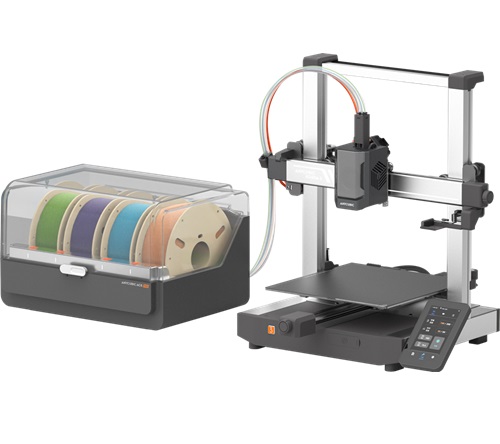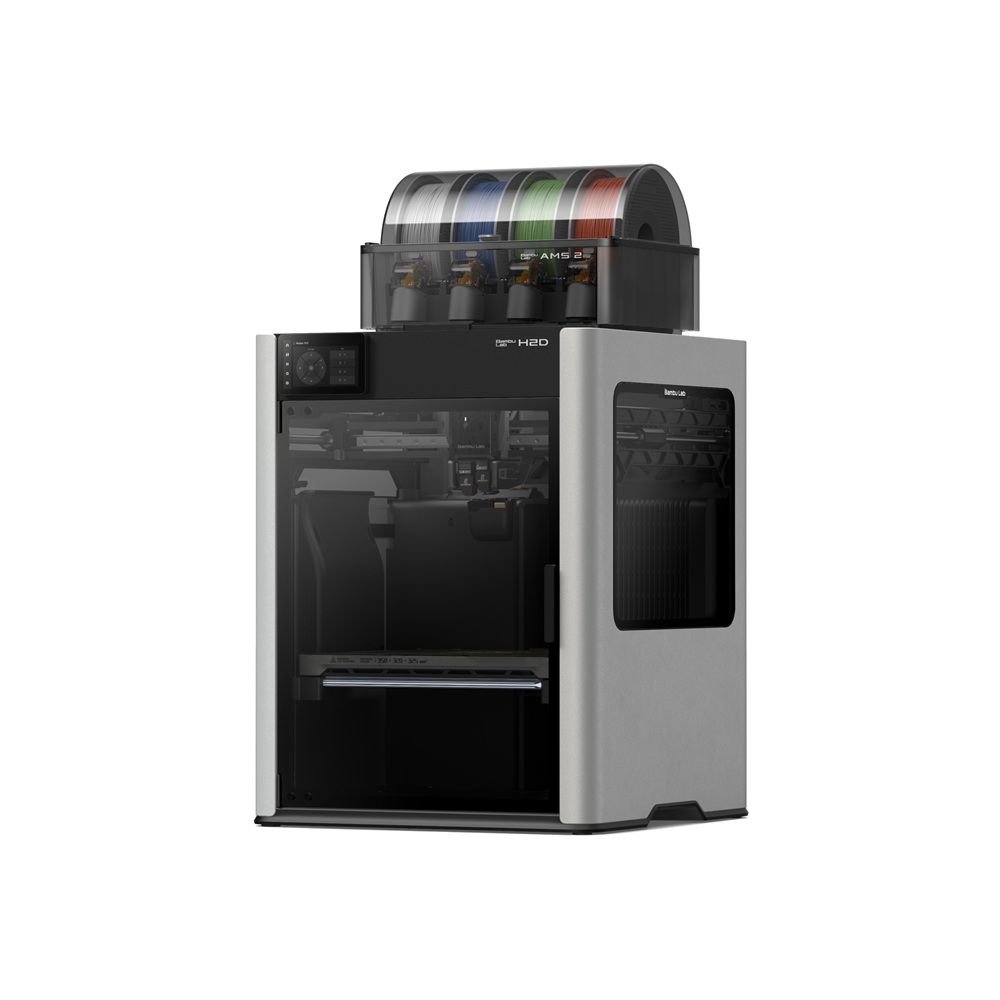Compare Kobra 3 Combo vs H2D
Comparison between the best 3D printers
Choose the best 3D printer at the best price. The cheapest 3D printers are here.
Buy a 3D printer here with 3D Fila.
 |
 |
|
| Model | Kobra 3 Combo[BUY Kobra 3 Combo] |
H2D |
| Printing Material | Filament | Filament |
| Buy Filament for Anycubic Kobra 3 Combo | Buy Filament forBambu Lab H2D | |
| Estimated price | $349,00 | $1899,00 |
| Manufacturer | Anycubic | Bambu Lab |
| Release Year | 2024 | 2025 |
| Print Volume [mm] | 250x250x260 | 350x320x325 |
| Printer Size [mm] | 452x504x483 | 492x514x626 |
| Weight [kg] | 9,2 | 42,3 |
| Power Loss Recovery | YES | YES |
| Enclosed printer | NO | YES |
| Bed Leveling | Automatic | Automatic |
| Filament End Sensor | YES | YES |
| Bed type | Heated | Heated |
| Power supply system | Direct Drive | Direct Drive |
| Standard nozzle | 0,4 | 0,4 |
| Maximum Nozzle Temperature [°C] | 300 | 350 |
| Maximum Bed Temperature [°C] | 110 | 120 |
| Maximum printing speed [mm/s] | 600 | 600 |
| Filament holder | YES | YES |
| Camera for supervision | NO | NO |
| Recommended filaments | PLA, PETG, ABS, PP, HIPS | PLA, PETG, ABS, ASA, TPU, PVA, Nylon (PA) |
| Recommended slicers | Anycubic Slicer, Cura, Orca Slicer | Bambu Studio |
| Maximum Resolution [mm] | 0,1 | 0,01 |
| Processor | 32 bits | |
| Display | Touchscreen 4,3'' | Touchscreen 5'' |
| Power Supply | 400 W | |
| Connectivity | USB, Wi-Fi, Cloud | Wifi, Bambu bus, Cartão SD |
| Operating systems | Windows, Linux, Macbook | Windows, Mac, Linux |
| Date of registration in the system | 2024-06-27 | 2025-03-31 |
| Release date | 2024 | 2025 |
| Extra features | The Anycubic Kobra 3 Combo offers advanced features, including multi-filament printing with the ACE (Anycubic Color Engine) system, allowing for quick switching of up to four filaments. It features automatic bed leveling, nozzle clogging detection, and integrated filament drying during printing. The printer supports technical materials such as ABS, ASA, Nylon, and PC, thanks to the hotend that reaches 300°C and the heated bed up to 110°C. In addition, it has a 4.3-inch touchscreen and compatibility with various slicers such as Anycubic Slicer, Cura, and Orca Slicer. | Bambu Labs H2D combines high-speed 3D printing with a chamber heated up to 65 °C, dual extrusion with automatic nozzle switching, an AMS for filament drying and exchange, and AI sensors that detect failures. It offers optional laser and digital cutting capabilities, features intelligent calibration through computer vision, vibration control, enhanced fire safety, and real-time camera monitoring. |
| Support for multiple colors and materials (AMS and CFS) | YES | YES |
Notes * |
||
| Cost-benefit | 8 / 10 | 7 / 10 |
| Hardware | 4.5 / 10 | 8 / 10 |
| Tela | . | . |
| Print volume | 4 / 10 | 4 / 10 |
| Performance | 5 / 10 | 5 / 10 |
| [BUY Kobra 3 Combo] |
Conclusion |
| In comparing the Anycubic Kobra 3 Combo and the Bambu Lab H2D, several key factors emerge that highlight the strengths and weaknesses of each option, allowing potential buyers to make an informed decision based on their needs and budget. The Anycubic Kobra 3 Combo is significantly more affordable while still offering robust features. It boasts a decent print volume and supports multiple filament types, which makes it suitable for a variety of projects. Its advanced features, such as automatic bed leveling and filament drying, enhance usability, although it lacks some of the advanced capabilities found in more expensive models. On the other hand, the Bambu Lab H2D is positioned as a high-end 3D printer with a larger print volume and a suite of advanced technologies such as dual extrusion, intelligent calibration, and enhanced monitoring features. While it commands a higher price point, its superior build quality and capabilities, including more extensive material compatibility and increased maximum temperatures, make it an excellent choice for professionals or serious enthusiasts seeking high performance. In terms of value, the Kobra 3 Combo provides a better cost-benefit ratio, making it ideal for those entering the 3D printing realm or with budget constraints. Conversely, the H2D justifies its higher price with advanced features geared toward maximizing productivity and efficiency, aimed at users who require a professional-grade machine. Ultimately, prospective buyers should weigh their specific needs against their budget. For casual users or beginners, the Kobra 3 Combo offers an excellent entry point with a solid feature set. In contrast, the H2D stands out for those who prioritize performance and can invest in higher-end technology, particularly in professional settings or advanced projects. |

